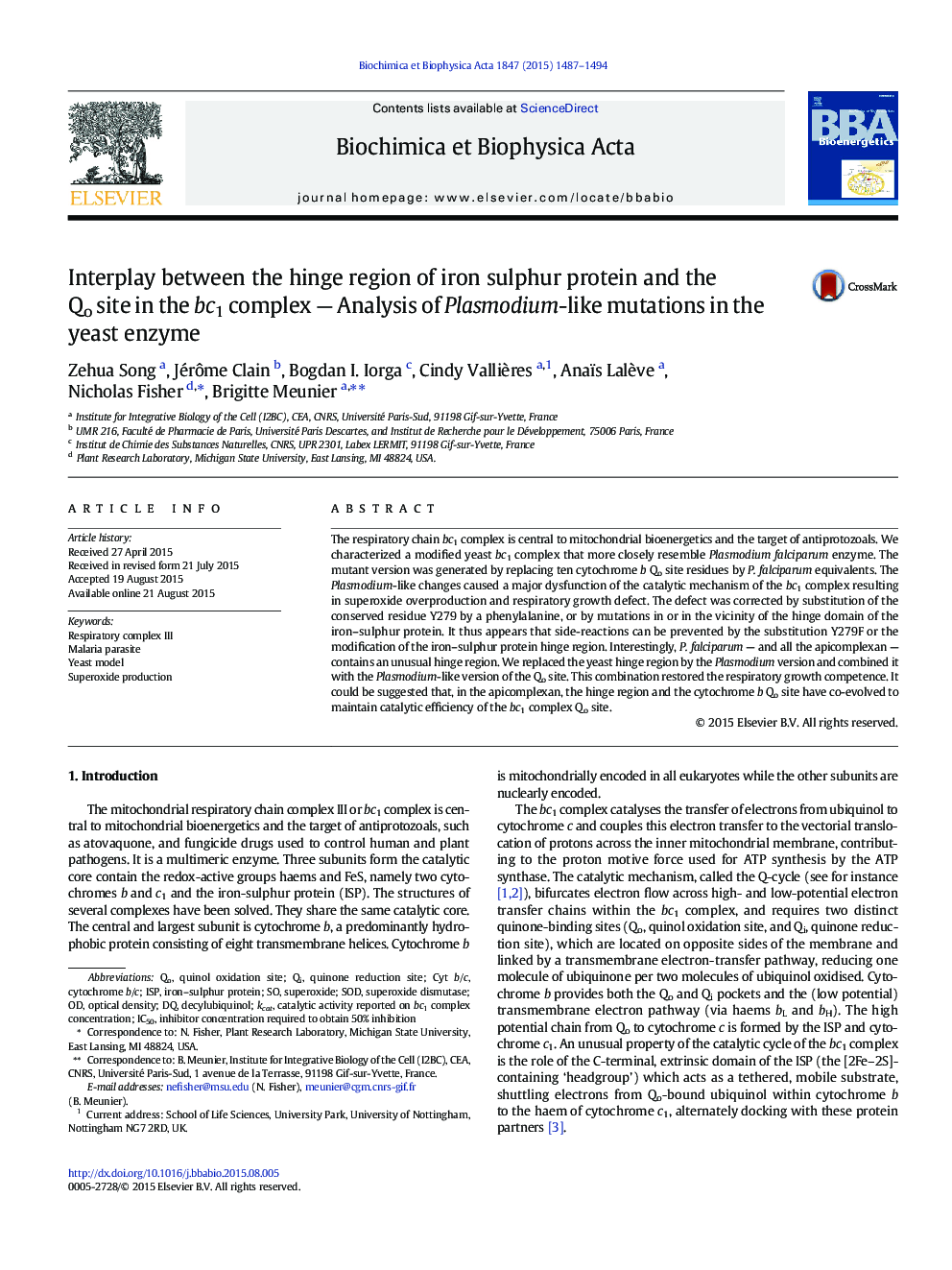| Article ID | Journal | Published Year | Pages | File Type |
|---|---|---|---|---|
| 1942071 | Biochimica et Biophysica Acta (BBA) - Bioenergetics | 2015 | 8 Pages |
Abstract
The respiratory chain bc1 complex is central to mitochondrial bioenergetics and the target of antiprotozoals. We characterized a modified yeast bc1 complex that more closely resemble Plasmodium falciparum enzyme. The mutant version was generated by replacing ten cytochrome b Qo site residues by P. falciparum equivalents. The Plasmodium-like changes caused a major dysfunction of the catalytic mechanism of the bc1 complex resulting in superoxide overproduction and respiratory growth defect. The defect was corrected by substitution of the conserved residue Y279 by a phenylalanine, or by mutations in or in the vicinity of the hinge domain of the iron-sulphur protein. It thus appears that side-reactions can be prevented by the substitution Y279F or the modification of the iron-sulphur protein hinge region. Interestingly, P. falciparum - and all the apicomplexan - contains an unusual hinge region. We replaced the yeast hinge region by the Plasmodium version and combined it with the Plasmodium-like version of the Qo site. This combination restored the respiratory growth competence. It could be suggested that, in the apicomplexan, the hinge region and the cytochrome b Qo site have co-evolved to maintain catalytic efficiency of the bc1 complex Qo site.
Keywords
Related Topics
Life Sciences
Agricultural and Biological Sciences
Plant Science
Authors
Zehua Song, Jérôme Clain, Bogdan I. Iorga, Cindy Vallières, Anaïs Lalève, Nicholas Fisher, Brigitte Meunier,
